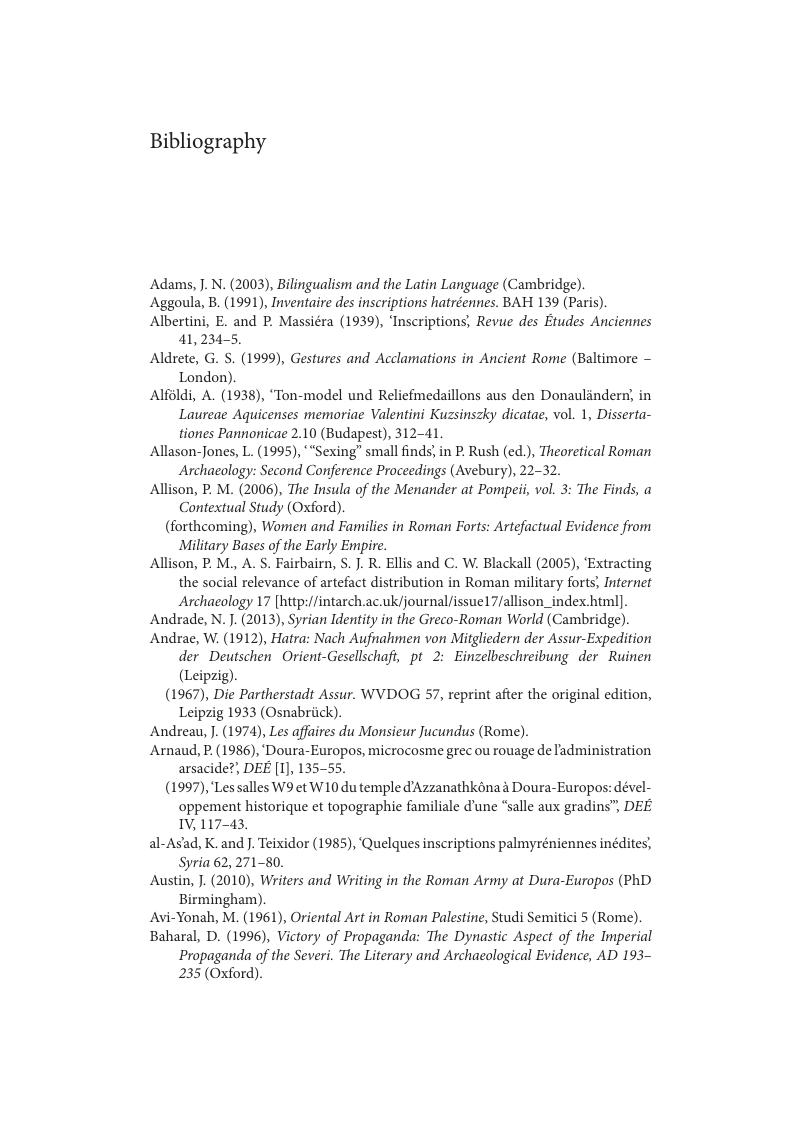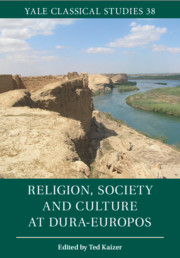Book contents
- Religion, Society and Culture at Dura-Europos
- Religion, Society and Culture at Dura-Europos
- Copyright page
- Contents
- Plates
- Contributors
- Preface
- Acknowledgements
- Abbreviations
- 1 Introduction
- 2 Dura-Europos: A Greek Town of the Parthian Empire
- 3 Everyday Life in Roman Dura-Europos
- 4 Acculturation, Hybridity, Créolité
- 5 The Problem with Parthian Art at Dura
- 6 Gesture at Dura-Europos
- 7 Women and the Religious Life of Dura-Europos
- 8 Multifunctional Sanctuaries at Dura-Europos
- 9 The Mithraeum of Dura-Europos
- 10 Imperial Representation at Dura-Europos
- 11 Thoughts on Two Latin Dipinti
- 12 The Bilingual Palmyrene–Greek Inscriptions at Dura-Europos
- 13 Economic Life in Roman Dura-Europos
- 14 The Dangers of Adventurous Reconstruction
- 15 Dura-Europos and Yale: Past, Present, and Future
- Plates
- Bibliography
- Index of Sources
- General Index
- References
Bibliography
Published online by Cambridge University Press: 18 November 2016
- Religion, Society and Culture at Dura-Europos
- Religion, Society and Culture at Dura-Europos
- Copyright page
- Contents
- Plates
- Contributors
- Preface
- Acknowledgements
- Abbreviations
- 1 Introduction
- 2 Dura-Europos: A Greek Town of the Parthian Empire
- 3 Everyday Life in Roman Dura-Europos
- 4 Acculturation, Hybridity, Créolité
- 5 The Problem with Parthian Art at Dura
- 6 Gesture at Dura-Europos
- 7 Women and the Religious Life of Dura-Europos
- 8 Multifunctional Sanctuaries at Dura-Europos
- 9 The Mithraeum of Dura-Europos
- 10 Imperial Representation at Dura-Europos
- 11 Thoughts on Two Latin Dipinti
- 12 The Bilingual Palmyrene–Greek Inscriptions at Dura-Europos
- 13 Economic Life in Roman Dura-Europos
- 14 The Dangers of Adventurous Reconstruction
- 15 Dura-Europos and Yale: Past, Present, and Future
- Plates
- Bibliography
- Index of Sources
- General Index
- References
Summary

- Type
- Chapter
- Information
- Religion, Society and Culture at Dura-Europos , pp. 275 - 300Publisher: Cambridge University PressPrint publication year: 2016



